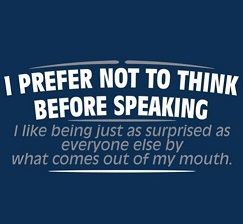What's Restraint Got To Do With Effective Leadership?
We've been using the Leadership Effectiveness Analysis (LEA) 360 Survey published by the Management Research Group for over two decades. The LEA 360 measures 22 leader behaviors from the perspective of "self" and "observers" (boss, peers, direct reports).
One of the behaviors in the LEA is called Restraint. Someone who scores high on this scale "maintains a low-key, understated and quiet interpersonal demeanor by working to control emotional expression."
Someone who scores low is likely to "allow their emotions to show; they make little effort to keep their feelings in check."
The good news is that MRG provides potential assets and potential liabilities for both low and high scores on all the behavior scales. The Resource Guide provides this information.
The Upside and Downside of High and Low Restraint
Leaders who manifest high restraint will often not say what they are thinking if saying it has the potential to offend someone or to initiate conflict. The result is that you might know what the individual is thinking and they will often leave important things unsaid. On the upside, they rarely offend someone with what they say and will tend to "play nice".
Here's a poster we ran across that might apply to leaders with low restraint.

The upside of a leader with low restraint is that you will almost always know what they are thinking or feeling. The downside is that they may express those thoughts or feelings in a way that impacts a relationship negatively.
So What's the Optimal Behavior?
MRG would likely say, "That depends". They contend that there is no one right way to lead and that effectiveness must be viewed through four filters:
- The Organization
- One's Role
- The Situation
- The Individual
That being the case, there are situations in which both high and low restraint would be appropriate and most effective.
In the main, however, a moderate degree of restraint seems to be the behavior range that is best for most occasions. This range of behaviors would reinforce the leader's authenticity while displaying diplomacy. We expect moderate restraint to be assertive, but not offensive.
To conclude: there are times when it is best to keep your mouth shut (high restraint) and others in which it may be appropriate to say exactly what you are thinking and feeling (e.g., dealing with a "bully" leader).
Being self-aware and having a range of possibilities available will best serve a leader's effectiveness in the short- and long run.